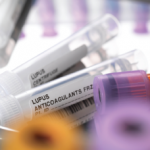ACR Convergence 2021—Systemic lupus erythematosus (SLE) is known to rheumatologists the world over as a condition that can manifest in myriad ways and can range from mild to life-threatening. At ACR Convergence 2021, this disease was the focus of a presentation during the annual Review Course, and the lecture served to summarize where the field of rheumatology stands in diagnosing and treating SLE.
Richard Furie, MD, chief of rheumatology at Northwell Health, Great Neck, N.Y., and a professor of medicine at the Donald and Barbara Zucker School of Medicine at Hofstra/Northwell, Hempstead, N.Y., began his talk with the basics. He said approximately 200,000 people in the U.S. meet classification criteria for a diagnosis of SLE.1 The lupus mortality rate is fivefold higher in men than in women, and it is threefold greater in Black people than in white people.1
Hydroxychloroquine remains the backbone of therapy for patients with SLE, with evidence that it helps resolve rash, provide therapeutic benefits in treating arthritis, reduce lipid levels, lower the risk of thrombosis, prevent flares and improve survival, all while decreasing the risk of early cumulative damage.
Dr. Furie noted that lupus is typically a polygenic disease, with only a 25% concordance in identical twins.2 He noted that disease pathogenesis involves an interplay between the innate and adaptive immune systems, and that type I interferon is the main cytokine in the innate immune system involved with SLE.
Multiple environmental factors have been implicated in the possible pathogenesis of SLE, including such viruses as Epstein Barr, smoking, exposure to ultraviolet light, sex hormones, certain medications (e.g., minocycline and hydralazine) and diet.
[Dr. Furie] made a point to explain that classification criteria are not diagnostic criteria.
Classification Criteria
Dr. Furie referenced the 2019 ACR/EULAR classification criteria for SLE, which are the latest in a series of classification criteria developed over the past several decades.1 He made a point to explain that classification criteria are not diagnostic criteria, making them most helpful in identifying patients for research studies; they can serve only to guide clinicians toward a diagnosis.
In a departure from earlier classification criteria, the 2019 ACR/EULAR criteria require a positive anti-nuclear antibody (ANA) in a titer of at least 1:80 to consider an SLE diagnosis. The authors of the criteria note that testing by immunofluorescence on HEp-2 cells or a solid-phase ANA screening immunoassay with at least equivalent performance is highly recommended.3




